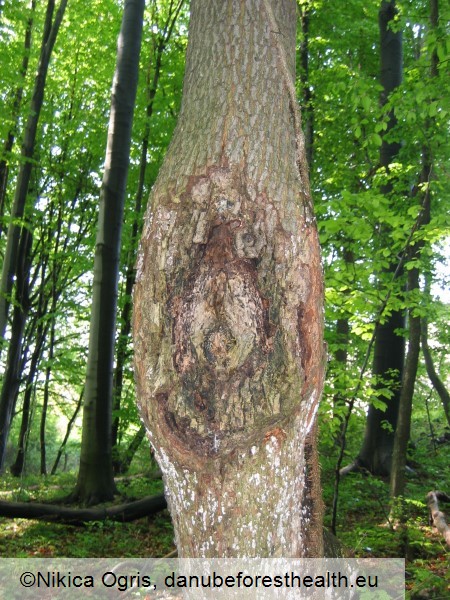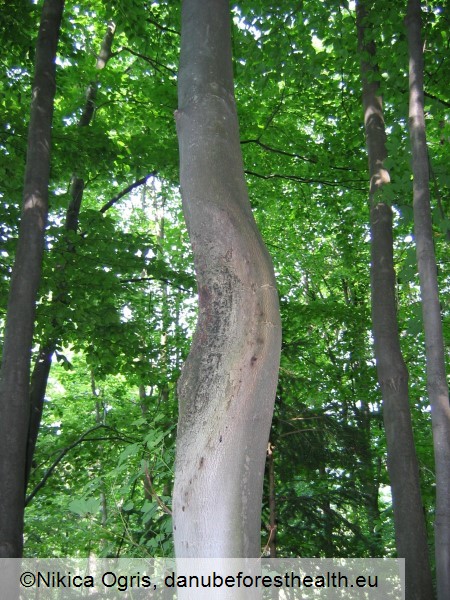Fungi
Eutypella canker of maple
Eutypella parasitica
Nikica Ogris
|
|

Fig. 1. Eutypella canker of maple on Acer campestris

Fig. 2. White mycelial fans

Fig. 3. Canker caused by Eutypella parasitica
DETECTION PERIOD:
Whole year
DESCRIPTION:
The main symptoms of Eutypella canker of maple are: canker; deformation of the trunk, which most often has an elliptical form, where the branch is usually at the center of the wound; in the bark white to beige mycelial fans are present; black fruiting bodies on the central part of the canker (perithecia, only their tiny black necks are visible). In the middle of the wound the wood can already be decomposed, the dead bark remains attached to the trunk for a long time. Young infections are very imperceptible. If the infection is up to 7 years old, no fruiting bodies exist on the bark.
HABITAT:
It appears on all species of maples. The disease occurs in groups.
STATUS:
Eutypella canker of maple is found in many countries of Danube region: Slovenia, Austria, Hungary and Croatia.
IMPACT:
The disease causes economic damage as part of the trunk is technically devalued and disfigured. The disease spreads in the bark and in the wood, but in the wood the spread is faster. Therefore, the damage is actually greater than it appears on the outside. Usually 3–5% of maples in the stands are infected. However, it can also be infected up to 50% of maples in the stand. Young tree to diameter ok. 10 cm usually dies, older trees can grow with the pathogen for decades. Trees with old canker often easily break by strong winds.
SIMILAR SPECIES:
Nectria spp., Botryosphaeria dothidea, Kretzschmaria deusta.
|